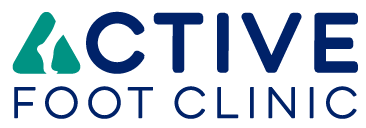Bunions
Bunions appear to be a bump on the side of your big toe, however the visible bump actually reflects changes in the bony framework of the front part of the foot. With a bunion, rather than pointing straight ahead the big toe leans toward the second toe throwing the bones out of alignment, producing the bunion’s “bump.”
Due to mechanical change in the area additional strain is placed on the joints nearby potentially causing pain, injury and even hammering of the nearby toes as well as pain and injuries in the rest of the forefoot. Even if you have bunions that are not painful it is a good idea to have them checked by one of our podiatrists so that we can prevent this additional damage in the forefoot.
Bunions are a progressive disorder with the characteristic bump continuing to become increasingly prominent. Usually the symptoms of bunions appear at later stages, although some people never have symptoms.
There are many factors which can contribute to the development of a bunion, the most common include genetic factors, poor foot mechanics, narrow footwear and trauma to the toe.
Treatment options may include:
Improving the joint mechanics to get the joint to work better, reduce progression of the deformity and minimize or relieve associated nearby joint concerns.
Helping you to select footwear which will help you to be more comfortable. Wearing the right kind of shoes is very important. We recommend that the forefoot easily fits within the width of the shoe and there is adequate cushioning and arch support. Soft materials such as smooth leather, suede or fabric will also help to reduce irritation to the area as well as avoiding seams in the bunion area.
Padding
We use of pads and cushions to reduce the pressure over the bone can also be helpful for mild bunion deformities. Pads placed over the area of the bunion can help minimise pain.
Activity Modification
Avoid activity that causes bunion pain
Strengthening & Stretching Exercises
To maintain joint mobility and prevent stiffness or arthritis
Medications
Non steroidal anti-inflammatory drugs (NSAIDs), such as ibuprofen, may help to relieve pain. This is a short term option.
Icing
Applying an ice pack several times a day helps reduce inflammation and pain. This is also a short term option.
Orthotic Devices
Our podiatrists can prescribe customised orthotic devices that help reduce the stress on a bunion and control biomechanical factors which cause them. Orthotics are generally highly effective at reducing pain, improved joint condition, reduce deformity progression and enable you to walk/run pain free.
When is surgery needed? When the pain of a bunion interferes with daily activities and we have exhausted non-surgical options your podiatrist will discuss with you the option of seeking a surgical opinion.
